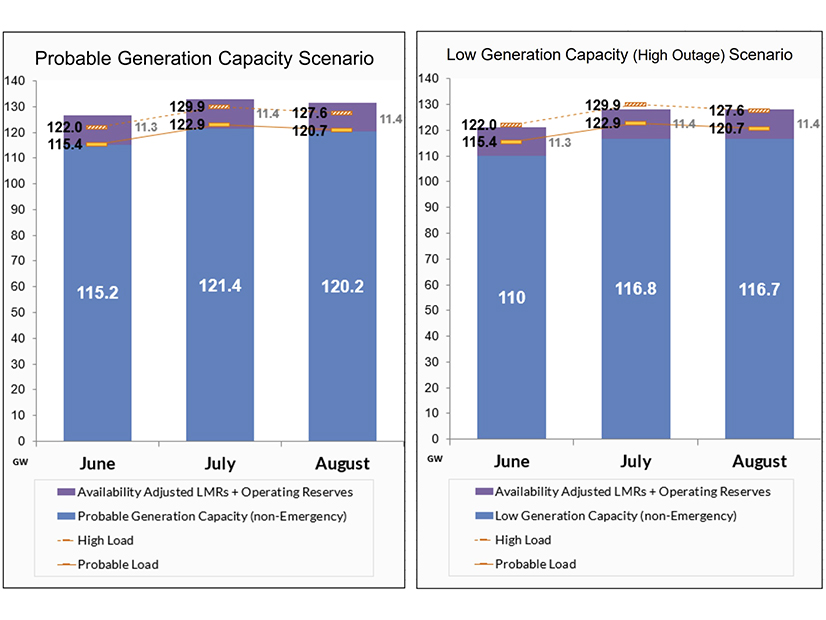CARMEL, Ind. — MISO this week said it will likely have little firm generating capacity to spare in managing typical summertime peaks this year.
John Harmon, director of market administration, said during a Reliability Subcommittee meeting Tuesday that the RTO is “continuing a trend where it increasingly relies on emergency resources, primarily in the form of load-modifying resources, and imports to manage peak loads.”
He added that MISO could exhaust both its firm resources stack and emergency supplies if it encounters high outages and load in June and July. In August, a high-load, high-outage scenario would leave the grid operator with a slim 500 MW of emergency resources.
MISO expects to have 115 GW of accredited resources in June, 123 GW in July and 121 GW in August to meet respective peak loads of 115 GW, 123 GW and 120 GW. The grid operator projects “sufficient firm resources” to cover the summer forecasts. However, if it falls short of meeting demand even under typical conditions, it can declare emergencies so it can access more than 11 GW of emergency padding from load-modifying resources.
MISO normally experiences a little more than 15 GW in forced generation outages and nearly 22 GW in total outages during the summer months.
Staff released the seasonal resource assessment later than usual this year because the delayed planning resource auction slowed the availability of capacity data. All MISO zones met their margin requirements for the 2023/24 planning year, which begins June 1. (See 1st MISO Seasonal Auctions Yield Adequate Supply, Low Prices and MISO Summer Assessment Postponed for Auction Results.)
The spring months have been uneventful so far. MISO averaged a 71-GW systemwide load in March, peaking at 89 GW on March 20. Natural gas accounted for the biggest slice (38%) of the fuel mix, followed by coal (24%), wind (19%) and nuclear (15%). Average real-time prices fell from $42/MWh last March to $26/MWh.
The RTO called for conservative operations — requesting deferred maintenance on facilities so they could be returned to service — in Indiana, Kentucky and Illinois after an outbreak of tornados and high winds March 31-April 1. It also issued a footprint-wide severe weather alert April 4-5 as a swath of severe thunderstorms moved across the country.
Besides those exceptions, Harmon said, the system “performed as expected.” Load averaged 66 GW during the month, with a 78-GW peak April 4. The month’s real-time prices dropped from a $60/MWh average last year to $26/MWh. April’s fuel mix was natural gas (36%), wind (23%), coal (21%) and nuclear (16%).
MISO recorded an all-time solar generation peak of 2.7 GW on May 4.


